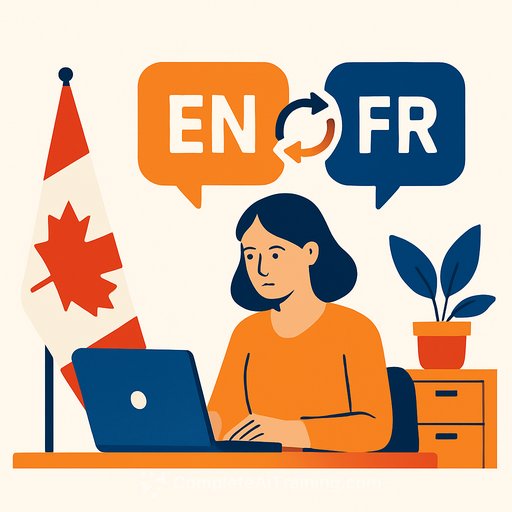Federal government pilots AI translation tool across six departments
The Government of Canada will pilot an AI translation tool, GCtranslate, in six departments and agencies to support bilingual service delivery. Announced by Minister of Government Transformation, Public Works and Procurement Joël Lightbound, the pilot is the first flagship project under the Treasury Board of Canada Secretariat's Artificial Intelligence Strategy. No start date was provided.
A previous test run in June processed more than 60 million words in three months - roughly 3,000 pages of translated content per workday. The tool was developed by the Translation Bureau at Public Services and Procurement Canada.
What is GCtranslate?
GCtranslate is an AI-assisted translation system built for internal government use. According to the government, it was evaluated by professional translators and draws on the Translation Bureau's catalogue of approximately eight billion words.
Lightbound said, "GCtranslate strengthens the use of both official languages across government and supports a modern public service that keeps pace with the digital age." The Bureau also plans to explore how AI can support translation into Indigenous languages.
Why this matters for the public service
The pilot aims to increase speed and consistency for routine translation tasks while freeing human translators to focus on higher-risk, public-facing, or nuanced content. If adopted government-wide, it could shift workflows, SLAs, and staffing models across communications, policy, and program teams.
Leaders should expect new guidance on when to use AI outputs, when to require human review, and how to measure quality across both English and French.
Concerns about quality and French
Nathan Prier, president of the Canadian Association of Professional Employees, warned that full automation would harm the quality of French. "I think this is going to have a negative impact directly on francophone communities," he said, arguing that AI "loses a lot of the nuance of the language."
Prier said implementation to date has been driven by cost-cutting and "happened in a very chaotic, very unsupervised way," and emphasized that the technology should complement, not replace, human translators. "They're the foundation of bilingualism in Canada."
Quality safeguards and data sources
The government says GCtranslate has undergone evaluation by professional translators and is powered by the Translation Bureau's internal corpus. That scale - roughly eight billion words - suggests strong domain coverage for government terminology, though domain drift, tone, register, and regional nuance will still require human judgment.
Expect updated guidance to define "AI-okay" content types versus "human-required" content, plus protocols for post-editing and approvals.
Where the pilot will run
- Public Services and Procurement Canada
- Privy Council Office
- Department of Finance Canada
- Canadian Heritage
- Financial Transactions and Reports Analysis Centre of Canada (FINTRAC)
- Royal Canadian Mounted Police (RCMP)
What to watch next
Key signals to monitor: start date and pilot scope, quality benchmarks for French, human-in-the-loop requirements, privacy and security guardrails, and how Indigenous language support will be tested. Departments outside the pilot should prepare for guidance that could scale quickly if results are positive.
Practical steps for managers and teams
- Define risk tiers for content. Require human review for anything public-facing, legal, stakeholder-sensitive, or high-impact.
- Establish post-editing standards. Set measurable quality targets for accuracy, tone, inclusivity, and regional nuance.
- Create a feedback loop with the Translation Bureau. Report systematic errors and terminology issues early.
- Update glossaries and style guides. Maintain current bilingual terminology, including program- and region-specific terms.
- Pilot on low-risk internal content first. Compare against human baselines to track gains and gaps.
- Address privacy and security. Clarify data handling, access controls, and retention for AI-assisted workflows.
- Invest in training. Upskill writers, reviewers, and translators on effective prompts and post-editing practices.
Resources
- Responsible use of AI in the Government of Canada
- Translation Bureau (Public Services and Procurement Canada)
- AI skills by job role - Complete AI Training
Your membership also unlocks:






